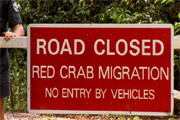Humans have a bit of a love/hate relationship with bees - we love their honey but hate their stings - but most of us don't know much about them. Here's the buzz on what bees are all about.
Bee Are Family - The Colony
Honeybees are very social and live in communities called hives. There are three main types of honeybees and each type has a very specific job in the community.
The Queen: The Queen is the largest and single most important bee in the hive. She is the only female bee capable of reproducing. When she emerges from her cell as a newborn bee she mates with about 18 drones and the sperm she collects will then last her for her whole life, which lasts about two years.
Drones: Drones have a pretty easy life. Their only job is to mate with the queen - they don't even have stingers or collect pollen.
Workers: Most bees in the hive are worker bees, which are always female. They have it pretty rough - they only live for about a month, can't mate, have to feed the queen and larvae, guard the hive entrance and even keep the hive cool by fanning their wings.
Bees - Honey I'm Home
Bees produce honey as food stores (for themselves, not for us) to eat during the winter when there isn't any fresh flower nectar available. Thankfully, they're such hard workers that they make far more than the colony can eat, so humans can harvest the rest. Sweet! Bees use their long tongues like straws to suck the nectar out of the flowers. They store the nectar in a special stomach, reserved only for honey, until they get back to the hive where other bees suck it out of their stomach and chew it until it turns from nectar to honey. The honey is then stored in cells (honeycomb) and covered in beeswax until it is needed.
Bees - The Painful Truth
Honeybees only sting as their last resort because their stingers are barbed like a fishhook and rip out of their bodies when they use them. As a result, the bee dies shortly after it stings you. And you thought getting stung was bad? The best thing to do if a bee stings you is to tell an adult and have them help you remove the stinger. It's best just to scrape away the stinger with a credit card or a butter knife. Don't try to pull it out with your fingers because you may end up pushing more venom into you, which will make it feel like you've been stung again. Ouch. Afterward, put ice on the area. Only a small percentage of people are allergic to bee stings, but to those who are, a sting can be life threatening. Keep an eye out for signs of shortness of breath or excessive swelling. If these symptoms occur, consult a doctor.
Bees - Did U Know?
- It takes the nectar from about two million flowers to make one pound of honey.
- Honeybees fly at speeds of about 15 miles per hour.
- Utah is known as the Beehive State.
































